
Roberta Tomber
Related Authors
Eivind Heldaas Seland
University of Bergen
Timothy Power
UAE University
Javad Ebrahimi
Shahid Beheshti University
Jairus Banaji
SOAS University of London
Kulbhushan Mishra
University of Delhi
Manjil Hazarika
Cotton University
Joanna Then-Obłuska
University of Warsaw
Shinu Anna Abraham
St Lawrence University
Dario Nappo
Università degli Studi di Napoli "Federico II"
InterestsView All (9)
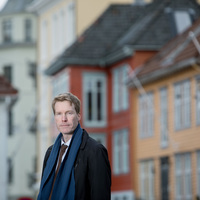
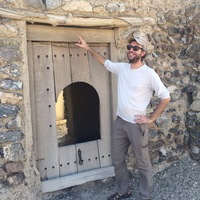
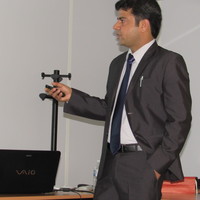

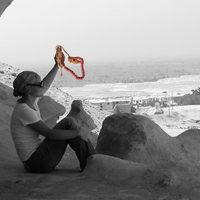

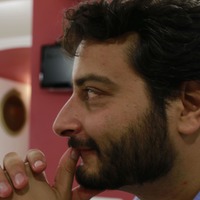
Uploads
Books by Roberta Tomber
This monograph brings together and integrates the discoveries of both teams, presenting a coherent analysis of the extensive surveys and the materials documented by each. Emphasis is placed on the physical setting of each site, its material remains--including preserved architecture, pottery and other surface finds--and relevant textual evidence, such as inscriptions, ostraka and related historical texts. A single chapter in gazetteer form is devoted to the sites themselves (excluding mines and quarries, which form a separate chapter), while other chapters present the geology of the region and ancient mines and quarries, which made use of the road network, the pottery evidence by phase, and specialist studies. An Introductory chapter offers historical and disciplinary context for the surveys and their subjects, tying the Berenike-Nile roads surveys into the corpus of archaeological surveys in Egypt and the wider Mediterranean world.
R. Tomber, HEROM: The material culture from Egypt’s Roman ports, 131-135 (editorial preface).
J. Whitewright, The ships and shipping of Indo-Roman trade: A view from the Egyptian Red Sea ports, pp. 137-171.
F. J. L. Handley, What did people wear at Myos Hormos? Evidence for clothes from the textile finds, pp. 173-203.
G. Majcherek, African amphorae in the East: a view from Alexandria, pp. 205-234.
M. Spataro, R. Tomber, (eds)
Contextualising science: Advances in ceramic production, use and distribution, pp. 503-504
D. Albero Santacreu
Interpreting long-term use of raw materials in pottery production: A holistic perspective, pp. 505-512
C. Berthold, K. B. Zimmer, O. Scharf, U. Koch-Brinkmann, K. Bente,
Nondestructive, optical and X-ray analytics with high local resolution on Attic white-ground lekythoi, pp. 513-520
V. Cannavò, A. Cardarelli, S. Lugli, G. Vezzalini, S.T. Levi
Fabrics and archaeological facies in northern Italy: An integrated approach to technological and stylistic choices in Bronze Age pottery production, pp. 521-531
C. Capelli, E. Starnini, R. Cabella, M. Piazza
The circulation of Early Neolithic pottery in the Mediterranean: A synthesis of new archaeometric data from the Impressed Ware culture of Liguria (north-west Italy),
pp. 532-541
B. de Groot, L. Thissen, R. Özbal, F. Gerritsen
Clay preparation and function of the first ceramics in north-west Anatolia: A case study from Neolithic Barcın Höyük,, pp. 542-552
G. D' Ercole, E. A.A. Garcea, G. Eramo, I. M. Muntoni
Variability and continuity of ceramic manufacturing of prehistoric pottery from Upper Nubia, Sudan: An ethnographic comparison, pp. 553-563
A. Hein, V. Kilikoglou
Compositional variability of archaeological ceramics in the eastern Mediterranean and implications for the design of provenance studies, pp. 564-572
M. Kibaroğlu, C. Falb, G. Hartmann
Application of strontium isotope analysis to provenance studies of Early Bronze Age North-Mesopotamian Metallic Ware, pp. 573-588
A. Kreiter, N. Kalicz, K. Kovács, Z. Siklósi, O. Viktorik,
Entangled traditions: Lengyel and Tisza ceramic technology in a Late Neolithic settlement in northern Hungary, pp. 589-603
A.K. Marghussian, R.A.E. Coningham, H. Fazeli
Investigation of Neolithic pottery from Ebrahimabad in the central plateau of Iran, utilising chemical–mineralogical and microstructural analyses, pp. 604-615
M.F. Ownby, E. Giomi, G. Williams
Glazed ware from here and there: Petrographic analysis of the technological transfer of glazing knowledge, pp. 616-626
M. Roffet-Salque, J. Dunne, D. T. Altoft, E. Casanova, L..J.E. Cramp, J. Smyth, H.L. Whelton, R. P. Evershed
From the inside out: Upscaling organic residue analyses of archaeological ceramics,
pp. 627-640
V.J. Steele, B. Stern
Red Lustrous Wheelmade ware: Analysis of organic residues in Late Bronze Age trade and storage vessels from the eastern Mediterranean, pp. 641-657
O. Stilborg,
Pottery craft tradition in transition: From Neolithic central China to Bronze Age northern Sweden, pp. 658-664
S. Y. Waksman, J. Burlot, B. Böhlendorf-Arslan, J. Vroom
Moulded ware production in the Early Turkish/Beylik period in western Anatolia: A case study from Ephesus and Miletus, pp. 665-675
Papers by Roberta Tomber
Roman period necropoleis for humans and animals, and a large monument at the intersection of a major northsouth/ east-west street. Excavations especially focused on the Isis temple and on a quarter to the north that seems to have had, at least in part, a religious purpose. Also briefly surveyed were areas north of the city that had previously been unrecorded. Noteworthy finds from the excavation included impressive architectural remains, numerous and varied inscriptions on stone, among them one recording the name of a Blemmye king, and donations made to the Isis temple, and numerous sculptural finds in metal, stone and wood. Some of the stone sculpture, both relief and in the round, included images of Buddha and other South Asian deities. Examination on site of malacological and botanical (including wood) remains provided additional insights regarding life at this ancient Red Sea emporium.
scanning electron microscopy. These same techniques were used to examine the bitumen layer, providing insight into the vessel lining process. Analysis generally validated the distinction between the two classes; fabric variation within the classes identified eight petro-fabrics, suggestive of at least five workshops. These results point to regionally related workshops for each class category, exploiting distinct clay resources, rather than two single production sites.
Suitable clay resources are widely available throughout central/southern Iraq and southwestern Iran, including Ilam/Khuzestan.
the workshop was part of the project, broadly themed “Indian Ocean Trade and the Archaeology of Technology. This paper discusses the categories of personal adornment made of glass, stone, metal and terracotta. It may be added that the artefacts thus far quantified are from excavations of c. 1% of the Pattanam mound that measures over 100 acres.
This monograph brings together and integrates the discoveries of both teams, presenting a coherent analysis of the extensive surveys and the materials documented by each. Emphasis is placed on the physical setting of each site, its material remains--including preserved architecture, pottery and other surface finds--and relevant textual evidence, such as inscriptions, ostraka and related historical texts. A single chapter in gazetteer form is devoted to the sites themselves (excluding mines and quarries, which form a separate chapter), while other chapters present the geology of the region and ancient mines and quarries, which made use of the road network, the pottery evidence by phase, and specialist studies. An Introductory chapter offers historical and disciplinary context for the surveys and their subjects, tying the Berenike-Nile roads surveys into the corpus of archaeological surveys in Egypt and the wider Mediterranean world.
R. Tomber, HEROM: The material culture from Egypt’s Roman ports, 131-135 (editorial preface).
J. Whitewright, The ships and shipping of Indo-Roman trade: A view from the Egyptian Red Sea ports, pp. 137-171.
F. J. L. Handley, What did people wear at Myos Hormos? Evidence for clothes from the textile finds, pp. 173-203.
G. Majcherek, African amphorae in the East: a view from Alexandria, pp. 205-234.
M. Spataro, R. Tomber, (eds)
Contextualising science: Advances in ceramic production, use and distribution, pp. 503-504
D. Albero Santacreu
Interpreting long-term use of raw materials in pottery production: A holistic perspective, pp. 505-512
C. Berthold, K. B. Zimmer, O. Scharf, U. Koch-Brinkmann, K. Bente,
Nondestructive, optical and X-ray analytics with high local resolution on Attic white-ground lekythoi, pp. 513-520
V. Cannavò, A. Cardarelli, S. Lugli, G. Vezzalini, S.T. Levi
Fabrics and archaeological facies in northern Italy: An integrated approach to technological and stylistic choices in Bronze Age pottery production, pp. 521-531
C. Capelli, E. Starnini, R. Cabella, M. Piazza
The circulation of Early Neolithic pottery in the Mediterranean: A synthesis of new archaeometric data from the Impressed Ware culture of Liguria (north-west Italy),
pp. 532-541
B. de Groot, L. Thissen, R. Özbal, F. Gerritsen
Clay preparation and function of the first ceramics in north-west Anatolia: A case study from Neolithic Barcın Höyük,, pp. 542-552
G. D' Ercole, E. A.A. Garcea, G. Eramo, I. M. Muntoni
Variability and continuity of ceramic manufacturing of prehistoric pottery from Upper Nubia, Sudan: An ethnographic comparison, pp. 553-563
A. Hein, V. Kilikoglou
Compositional variability of archaeological ceramics in the eastern Mediterranean and implications for the design of provenance studies, pp. 564-572
M. Kibaroğlu, C. Falb, G. Hartmann
Application of strontium isotope analysis to provenance studies of Early Bronze Age North-Mesopotamian Metallic Ware, pp. 573-588
A. Kreiter, N. Kalicz, K. Kovács, Z. Siklósi, O. Viktorik,
Entangled traditions: Lengyel and Tisza ceramic technology in a Late Neolithic settlement in northern Hungary, pp. 589-603
A.K. Marghussian, R.A.E. Coningham, H. Fazeli
Investigation of Neolithic pottery from Ebrahimabad in the central plateau of Iran, utilising chemical–mineralogical and microstructural analyses, pp. 604-615
M.F. Ownby, E. Giomi, G. Williams
Glazed ware from here and there: Petrographic analysis of the technological transfer of glazing knowledge, pp. 616-626
M. Roffet-Salque, J. Dunne, D. T. Altoft, E. Casanova, L..J.E. Cramp, J. Smyth, H.L. Whelton, R. P. Evershed
From the inside out: Upscaling organic residue analyses of archaeological ceramics,
pp. 627-640
V.J. Steele, B. Stern
Red Lustrous Wheelmade ware: Analysis of organic residues in Late Bronze Age trade and storage vessels from the eastern Mediterranean, pp. 641-657
O. Stilborg,
Pottery craft tradition in transition: From Neolithic central China to Bronze Age northern Sweden, pp. 658-664
S. Y. Waksman, J. Burlot, B. Böhlendorf-Arslan, J. Vroom
Moulded ware production in the Early Turkish/Beylik period in western Anatolia: A case study from Ephesus and Miletus, pp. 665-675
Roman period necropoleis for humans and animals, and a large monument at the intersection of a major northsouth/ east-west street. Excavations especially focused on the Isis temple and on a quarter to the north that seems to have had, at least in part, a religious purpose. Also briefly surveyed were areas north of the city that had previously been unrecorded. Noteworthy finds from the excavation included impressive architectural remains, numerous and varied inscriptions on stone, among them one recording the name of a Blemmye king, and donations made to the Isis temple, and numerous sculptural finds in metal, stone and wood. Some of the stone sculpture, both relief and in the round, included images of Buddha and other South Asian deities. Examination on site of malacological and botanical (including wood) remains provided additional insights regarding life at this ancient Red Sea emporium.
scanning electron microscopy. These same techniques were used to examine the bitumen layer, providing insight into the vessel lining process. Analysis generally validated the distinction between the two classes; fabric variation within the classes identified eight petro-fabrics, suggestive of at least five workshops. These results point to regionally related workshops for each class category, exploiting distinct clay resources, rather than two single production sites.
Suitable clay resources are widely available throughout central/southern Iraq and southwestern Iran, including Ilam/Khuzestan.
the workshop was part of the project, broadly themed “Indian Ocean Trade and the Archaeology of Technology. This paper discusses the categories of personal adornment made of glass, stone, metal and terracotta. It may be added that the artefacts thus far quantified are from excavations of c. 1% of the Pattanam mound that measures over 100 acres.
Throughout its long history, Sumhuram was involved in an international network of commercial trades and contacts. Relations with Yemen, India, the Gulf, Egypt and the Mediterranean are attested by numerous small findings and a large amount of ceramic vessels.
This book is a comprehensive study of the imported and local pottery of Sumhuram.
A contribution by Roberta Tomber about late Hellenistic and Roman pottery completes and enhances the results of this volume. The discussion of the different types of pottery provides important new data about trade connections and maritime contacts in the Indian Ocean in the last centuries BC - first centuries AD.
providing insight into the vessel lining process. Analysis generally validated the distinction between the two classes; fabric variation within the classes identified eight petro-fabrics, suggestive of at least five workshops. These results point to regionally related workshops for each class category, exploiting distinct clay resources, rather than two single production sites. Suitable clay resources are widely available throughout central/southern Iraq and southwestern Iran, including Ilam/Khuzestan.